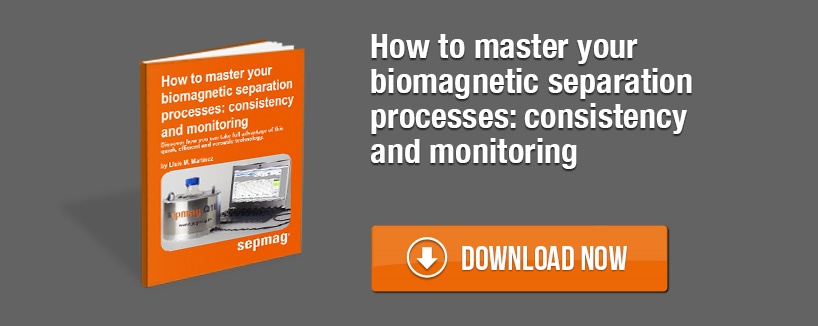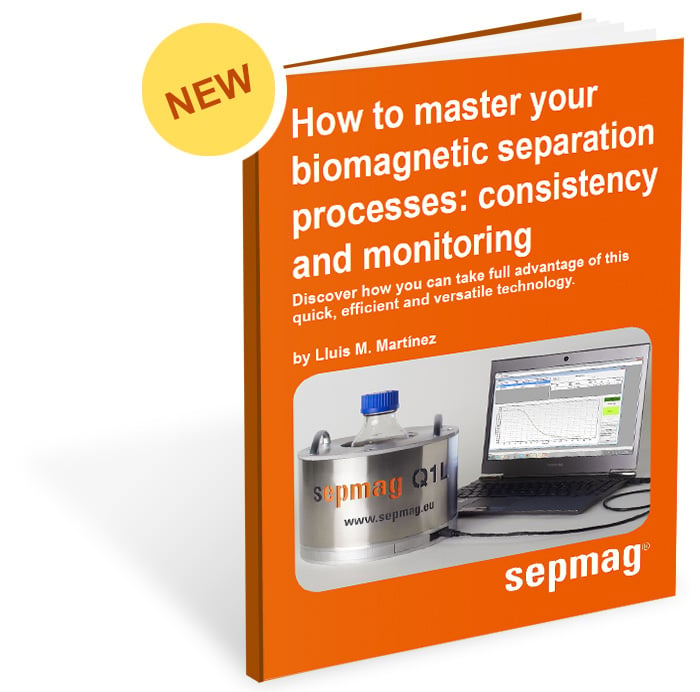By improving the capture and isolation of biomolecules in complex matrices, magnetic beads have facilitated a leap forward in life science technologies..
Magnetic beads are mobile during capture of biomolecules but can be immobilized in a few seconds by applying a magnetic force. This level of control - unattainable with other technologies - is the dream solution for working with biological suspensions. This technology has opened the door for new IVD kits, using heterogeneous approaches (e.g., allowing washing of the beads). It has also facilitated the recent expansion of chemiluminescent immunoassays and molecular diagnostics.
Beyond IVD kit production, there is increasing demand for biomagnetic separation technology in both biotech and IVD industries. Fueled by the COVID-19 crisis, magnetic beads have begun to be used for protein purification, cell sorting and mRNA purification. Their greater scalability, speed and efficiency makes them ideal for these applications.
The growing demand for this technology means that many researchers are now working with larger batches. Suddenly, users found that their simple, efficient R&D processes are not behaving the same way when scaled up. As a result, many believe that magnetic separation can't be used for larger volumes.
But for many, e.g., IVD manufacturers, keeping the volume small is not an option, with demand for magnetic bead kits still growing. This has created conflict between growing demand and issues with reproducing R&D protocols at larger volumes. We are very aware of this problem - it is one of the most common questions clients come to us with.
So, what is the solution? In 2004, a contract manufacturing company asked a small group of physicists and engineers for help. Just a few months later, the first Sepmag system was processing two-liter batches with the same efficiency and speed as R&D-scale volumes. Word soon spread, and leading IVD companies' volume requirements increased to 5 and 10 L (later 20 and 50 L).
The key to scaling up is understanding how to characterize and validate the process. Developing a process at a small volume is a waste of resources if users can't successfully move to production volumes. Correctly defining the biomagnetic separation conditions allows researchers to specify the magnetic force needed for each application. Production engineers then have access to key process parameters required to transfer to a larger volume.
In this e-book, we explain why magnetic force is the key parameter for biomagnetic separation processes, and why it matters. We also examine the common problems users have when scaling up. Discover how you can guarantee a consistent process, regardless of the volume, and how monitoring the separation process provides a powerful tool for both quality control and R&D.
The old saying ‘magnetic beads don’t work at large volumes’ is, simply, wrong. If you want to learn what leading IVD-manufacturers already know, this is the e-book for you!
Related news


